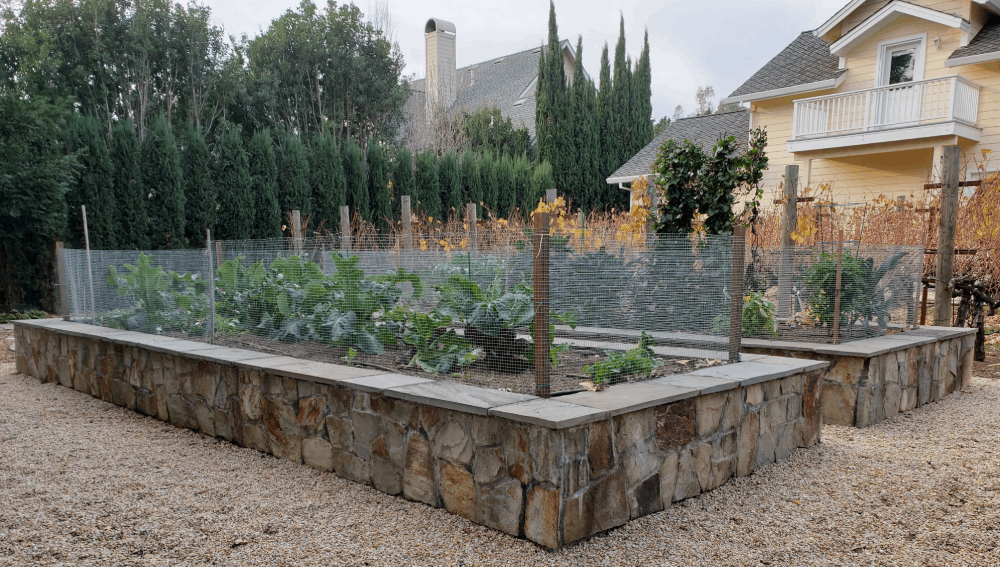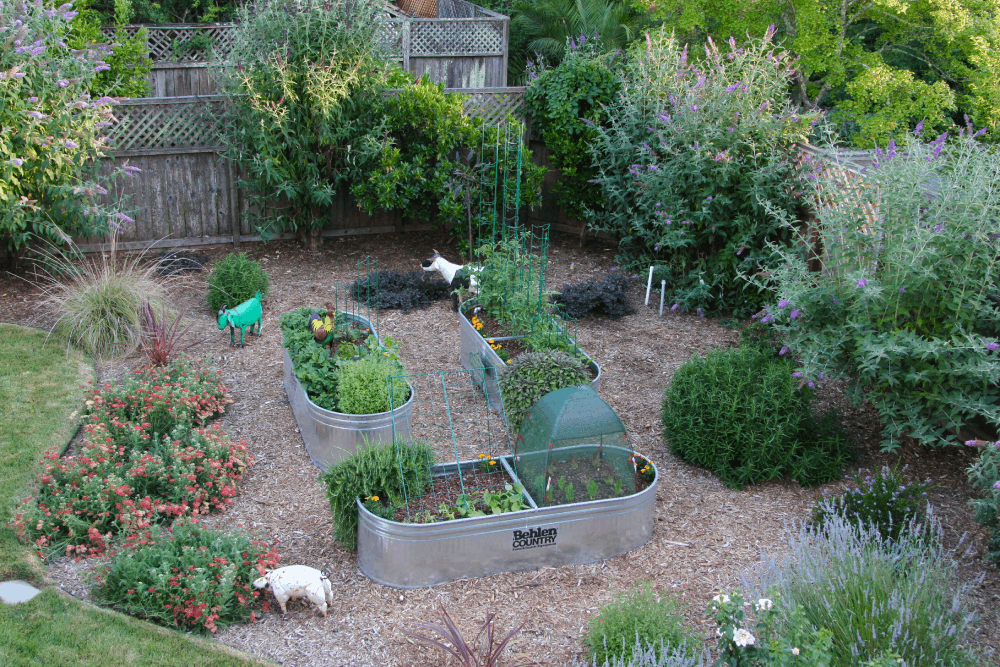Grow Your Own Food with Our Expert Edible Garden Designs

Whether it’s a traditional vegetable garden that is dedicated to a particular area in your yard, or a landscape that weaves vegetables, fruits and herbs throughout your garden, creating edible gardens are some of our favorite projects here at Equinox. Well designed edible gardens combine beauty and artistry with practical foods that homeowners love to eat. Perennial herbs provide ongoing culinary delights year after year. Fruit trees bring beauty, texture and seasonal shade to your landscape. Vegetables, such as artichokes and kale add gorgeous foliage and provide you with an abundance of vitamins in your diet. All of it can save you hundreds of dollars in grocery bills a year. We have studied how to design and maintain edible gardens and know from our experience that the secret to growing a bountiful and vibrant garden lies in the combining of vegetables and fruits with herbs, perennials and flowers. Done properly edible gardens attract beneficial insects, repel destructive insects and create the ideal environment for each edible to thrive. Give us a call when you are ready to get your edible garden underway.

Raised Bed Gardens
Want a thriving garden even with limited space or poor soil? Our custom-built raised beds provide optimal growing conditions, improve drainage, and make gardening more accessible. We’ll design and install the perfect raised bed system for your yard, using high-quality materials and tailored to your specific needs and aesthetic preferences

In Ground Gardens
Transform your yard into a vibrant and productive garden with our expert in-ground garden design and installation. We’ll work with your existing landscape, soil conditions, and sun exposure to create a beautiful and functional garden that seamlessly integrates with your outdoor space. From soil preparation and plant selection to irrigation and ongoing maintenance, we’ll handle every aspect of your in-ground garden.

Food Forests
Experience the magic of a food forest! We design and install self-sustaining ecosystems that mimic nature’s patterns, providing you with a diverse and abundant harvest of fruits, vegetables, herbs, and more. Our food forests are low-maintenance, resilient, and create a beautiful and productive habitat for wildlife. Let us help you create a thriving food forest that nourishes you and the environment
What are Food Forests?
Food Forests are gardens modeled after mature hardwood forests, designed with multi-leveled canopies of plants and trees to take advantage of varying sun exposure throughout the day. They are healthy ecosystems of edibles that are self-renewing, self-fertilizing, and when mature, self-maintaining.
The upper canopy in a food forest is made up of nitrogen-fixing trees which create shade that helps prevent weeds from growing underneath where no soil is left bare. The middle canopy consists of fruit and nut trees. Beneath that is the edible shrub layer that includes bushes such as raspberries or blueberries. An edible vine layer also plays a part in growing foods such as kiwis, grapes or runner beans vertically. A ground layer is made up of edibles like strawberries and chamomile. And lastly there is a bulb layer within the soil containing plants such as garlic and onions.
Plants within a food forest are grouped into guilds that assist each other in growing. Each guild consists of nitrogen fixers (plants that take nitrogen out of the air and send it into the soil, making it available for use by the surrounding plants) dynamic accumulators (plants that send their roots deep into the sub-soil and extract minerals such as calcium, drawing it up to the topsoil) insectary plants (which attract beneficial insects and pollinators critical for food production) and mulching plants (which drop their thick leaves onto the ground, creating a natural blanket for plants). Together they work to symbiotically and thrive.

Schedule a Consultation
Are you ready to turn your landscape vision into reality? Contact Equinox Landscape today to discuss your project with our expert team. Whether you’re starting with a new design or need help bringing an existing design to life, we have the skills and experience to make it happen.





